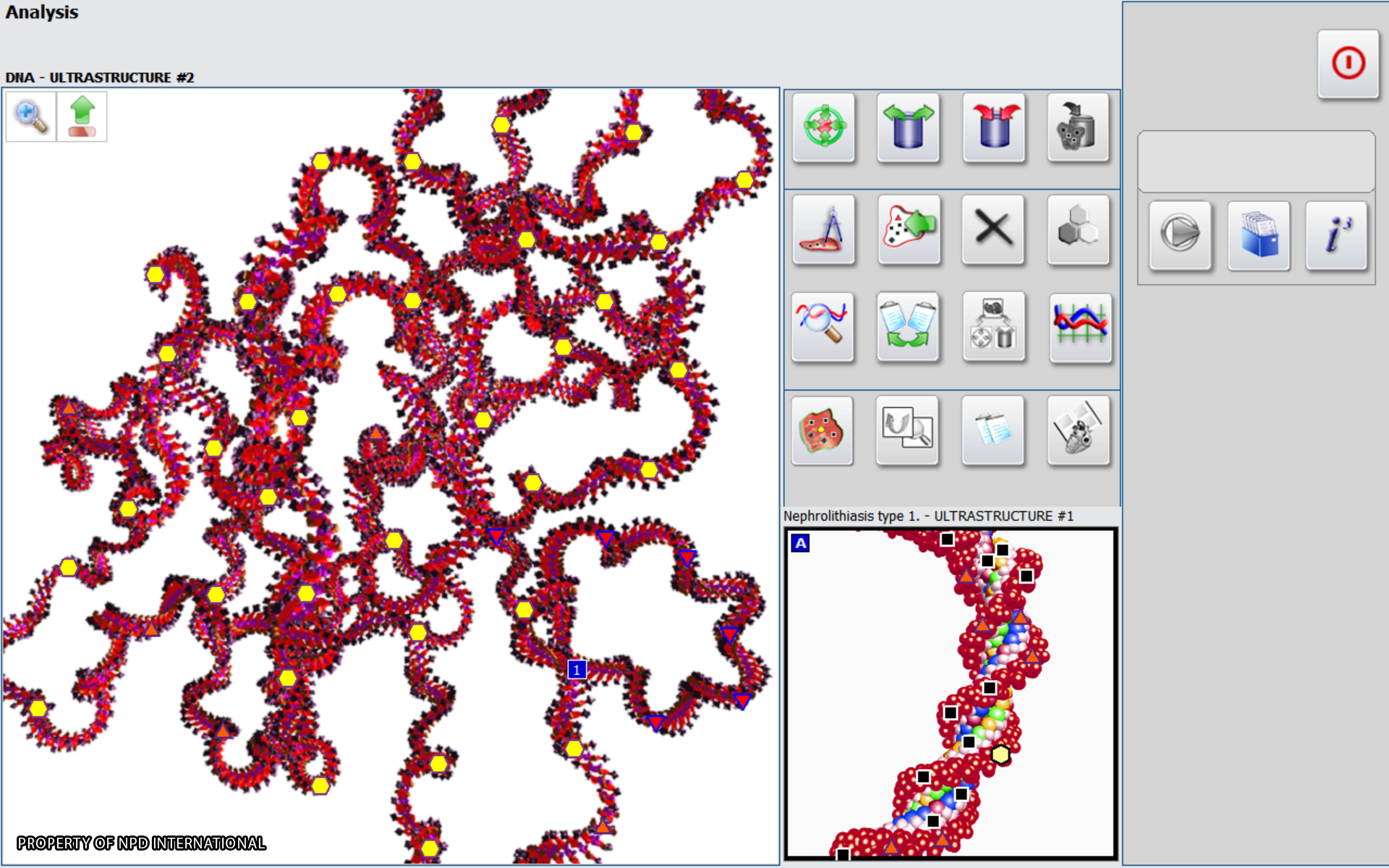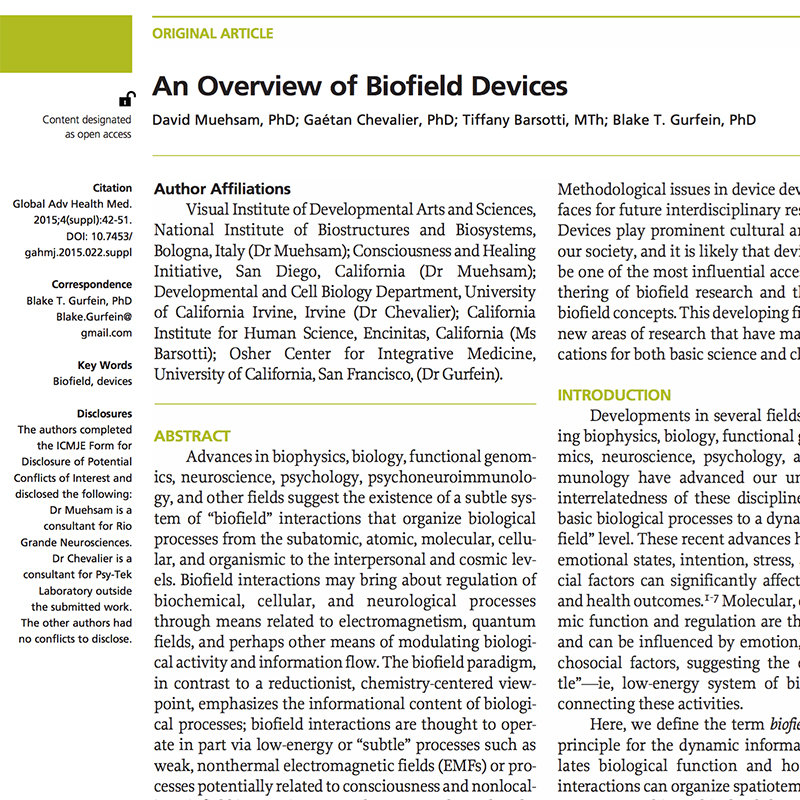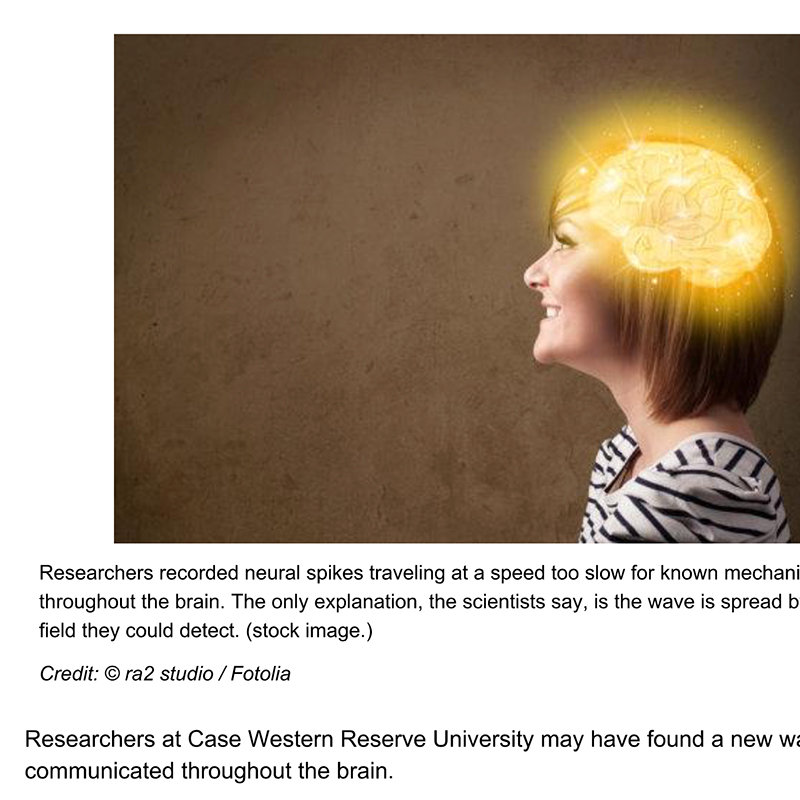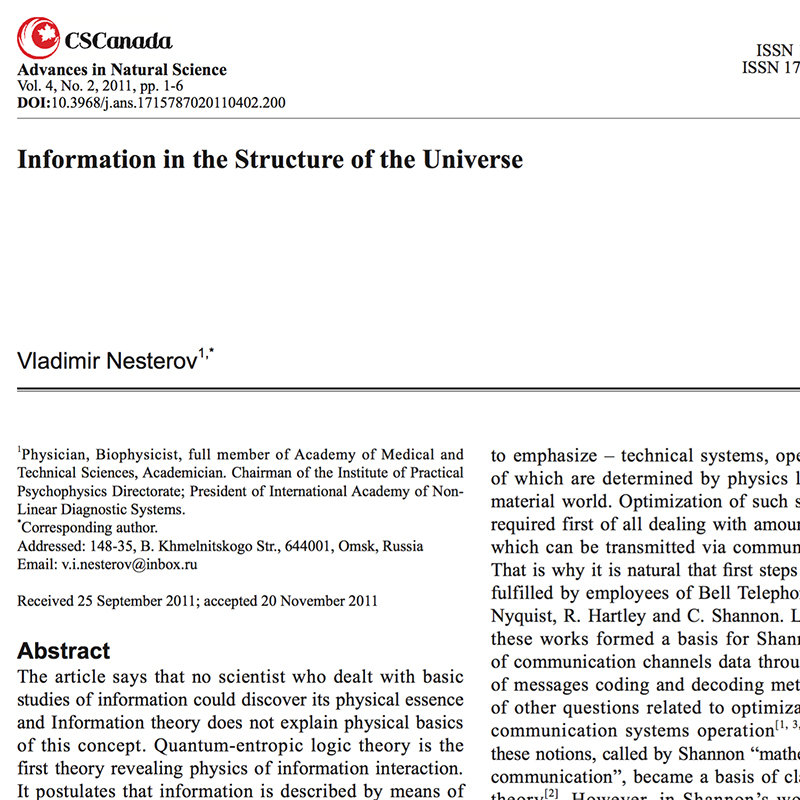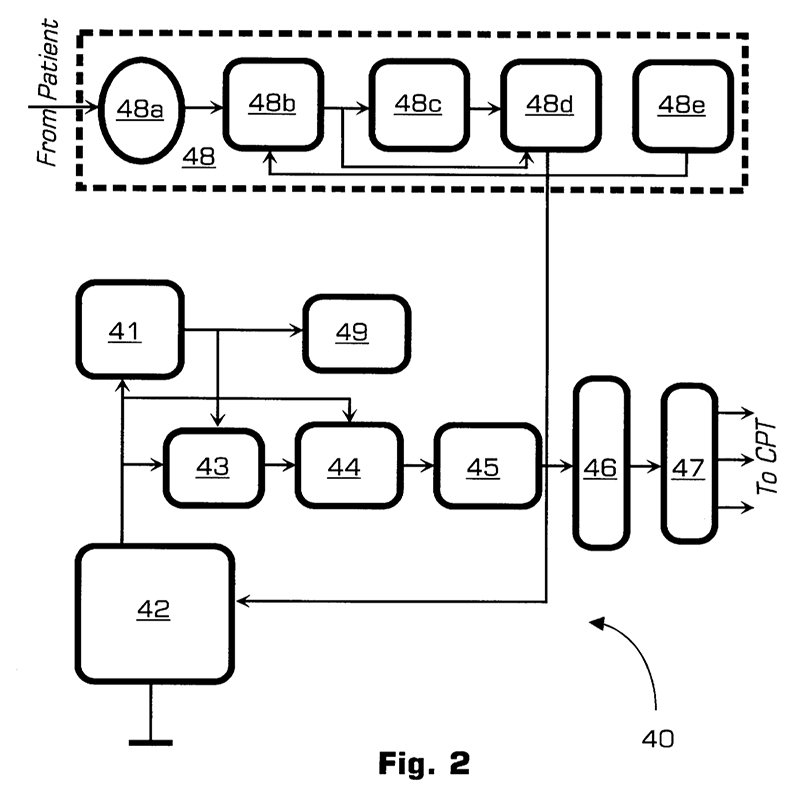- Screenshots
- What's Included
- Video
- System Requirements
- Literature
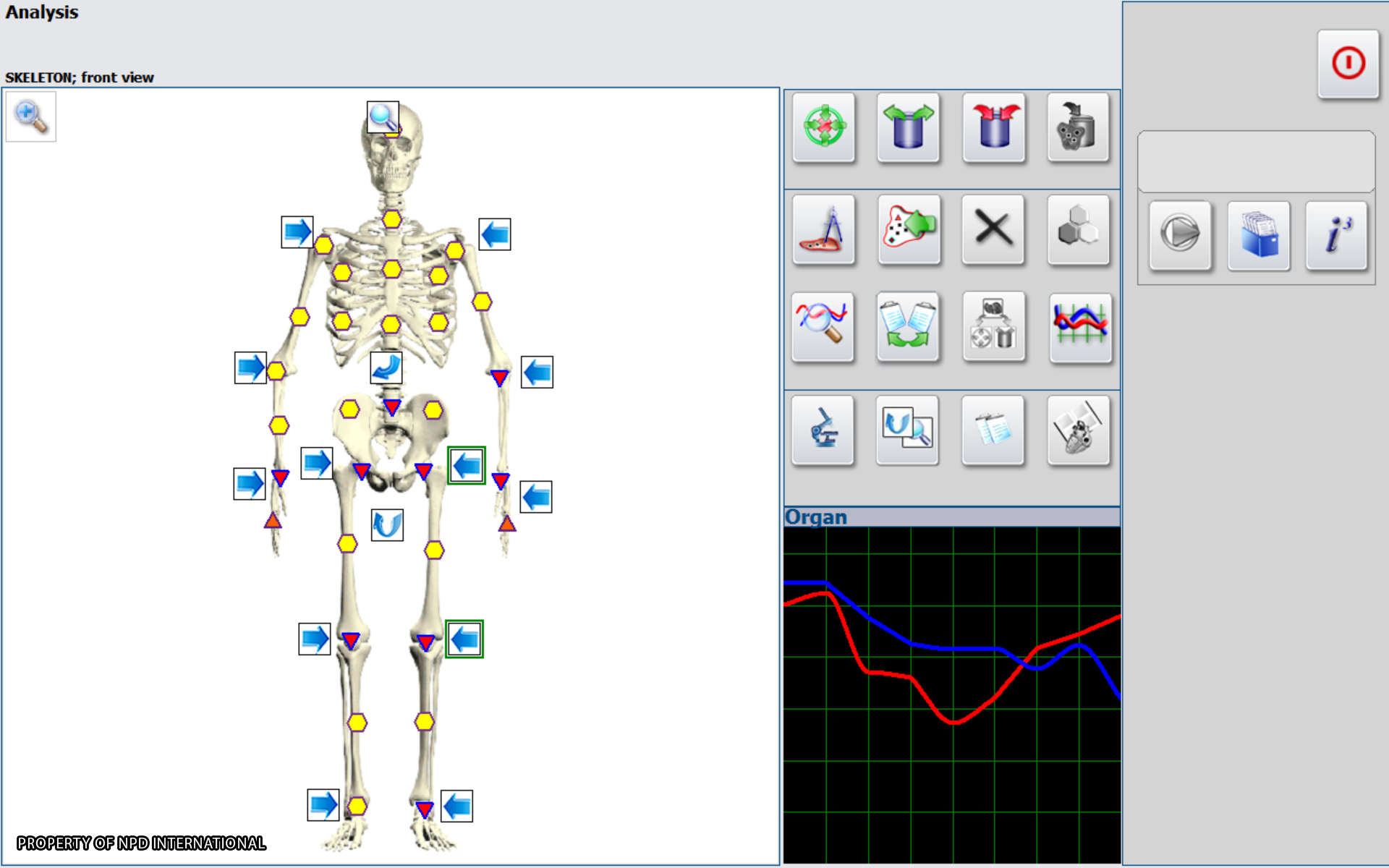
GR Hunter User Interface
The subject’s biofeedback graphs are shown in the bottom right corner and are simultaneously converted into the more easily understood 6-point Fleindler scale which is shown on the virtual anatomical models. This intuitive graphical user interface allows the practitioner to easily navigate to different parts and levels of the body. The readily identifiable icons and simple navigation allow proficiency of use in mere hours.
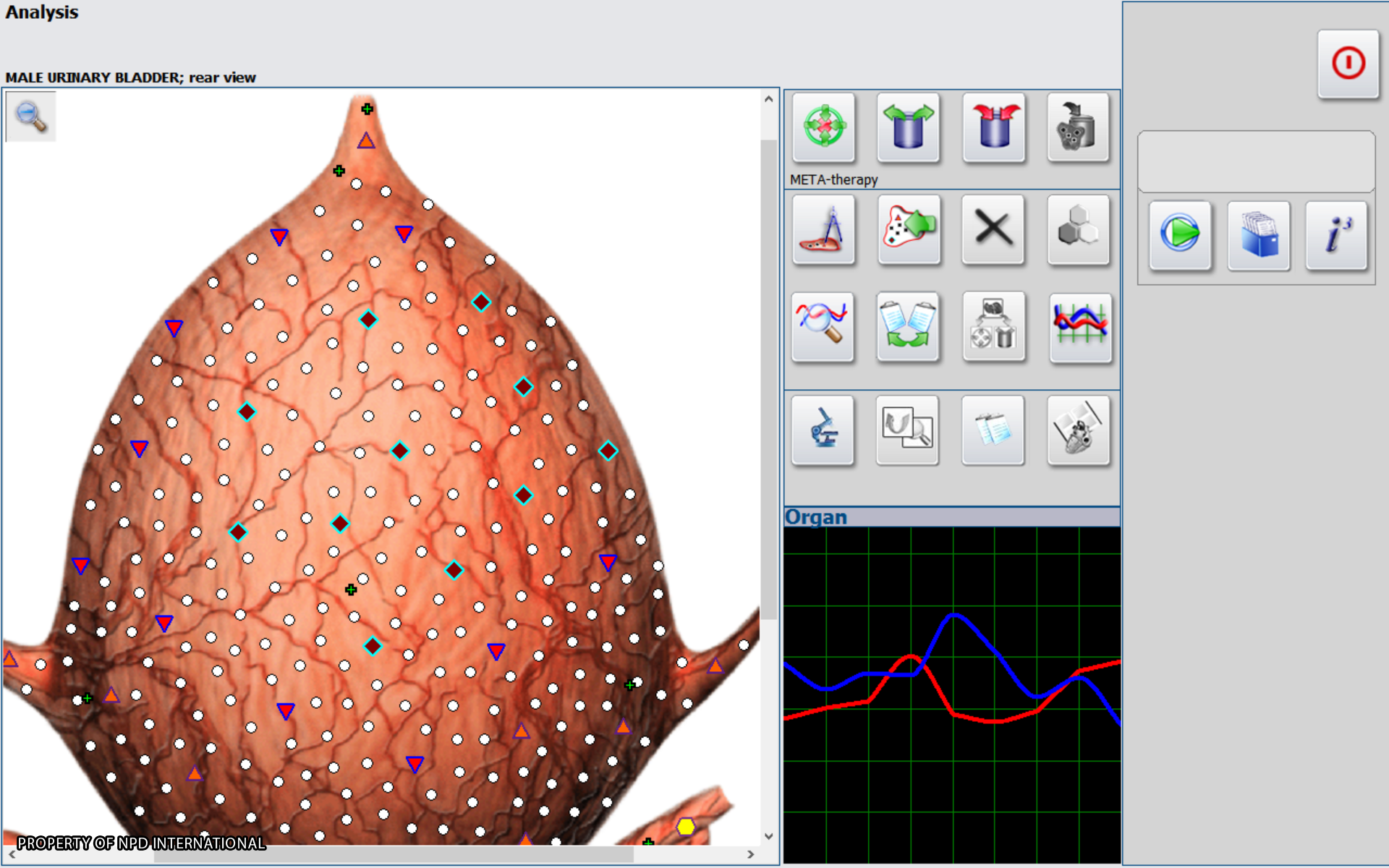
Zoom in to Evaluate more Data Points
The “Zoom” feature allows the operator to quickly focus in on areas in need of further analysis. The zoomed area is automatically populated with additional research points, which are subsequently evaluated.

Select Dysfunctional Area for Increased Accuracy
The next step of a “zoomed-in” analysis is to circle the area which shows the greatest dysfunction. This simple 3-step process greatly enhances the obtained information’s accuracy. Notably, this software feature is seldom functional in counterfeit systems and can be used by Doctors/ Patients to determine if they have been victims of fraud.
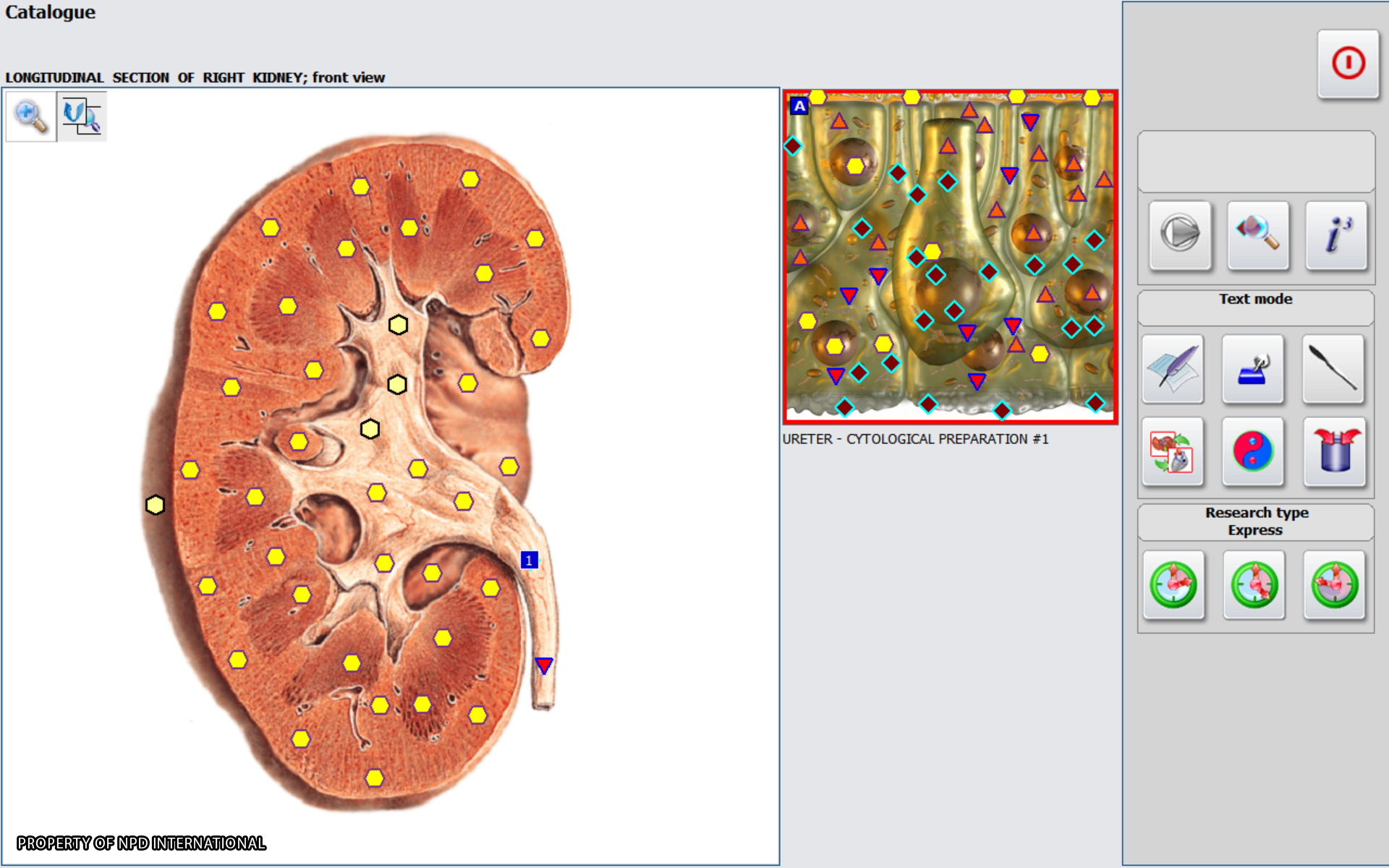
Automated Spiral Scanning
When a dysfunctional area is identified through biofeedback wave spectrum analysis, in this case in the ureter of the right kidney, the Hunter software automatically directs the next phase of biofeedback to the histological level. This is known as 3D-Spiral Scanning and the process will continue all the way to cytological levels if the dysfunction continues to persist.
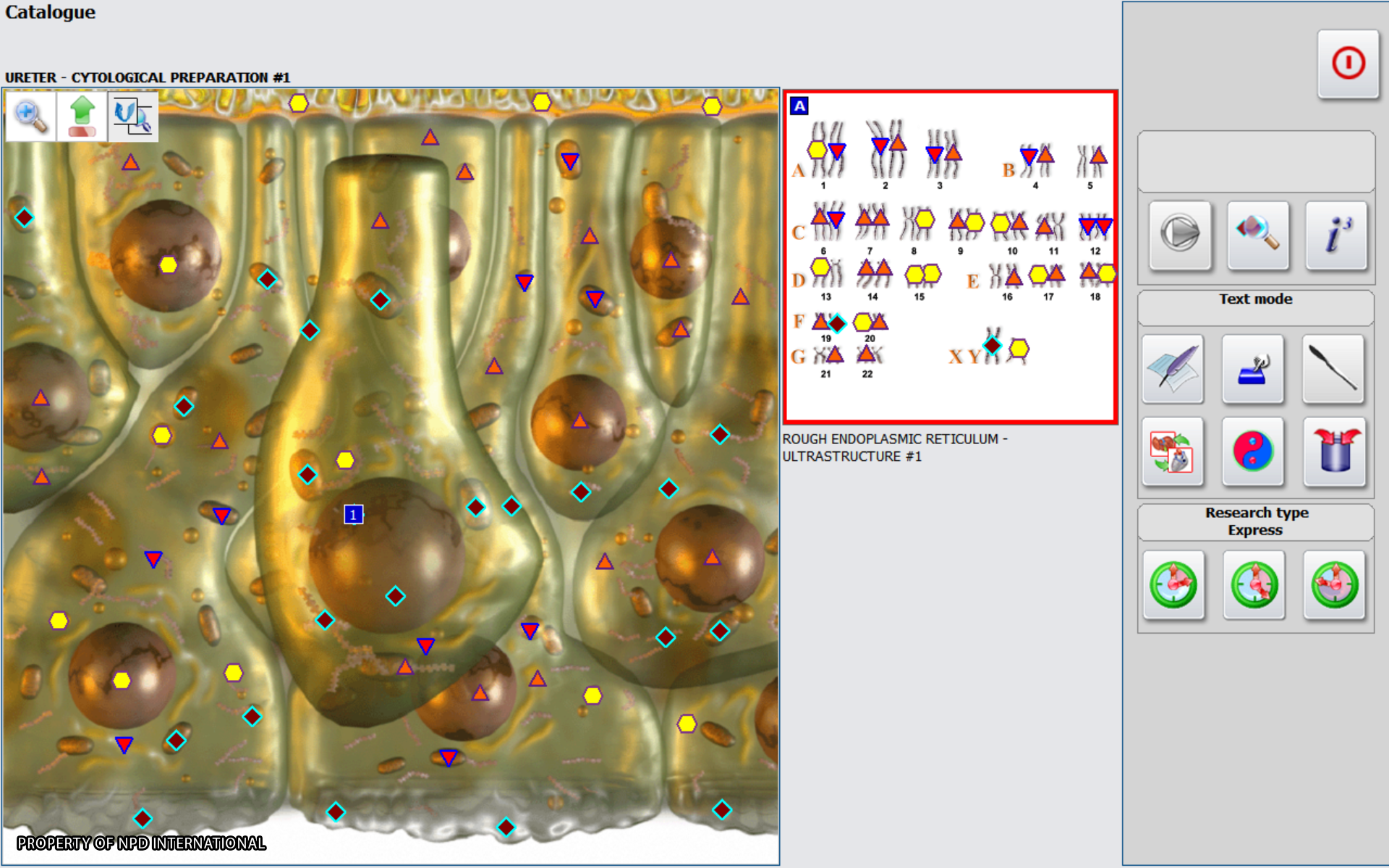
Histological Functional Assessment
In our 3D-Spiral-Scanning example, the ureter’s epithelial cells (histological level) at the nidus of dysfunction were then researched. Please note that this automated software function is often non-functional in counterfeit illegal systems and is one method a doctor or patient can use to determine if they have been victims of fraud.
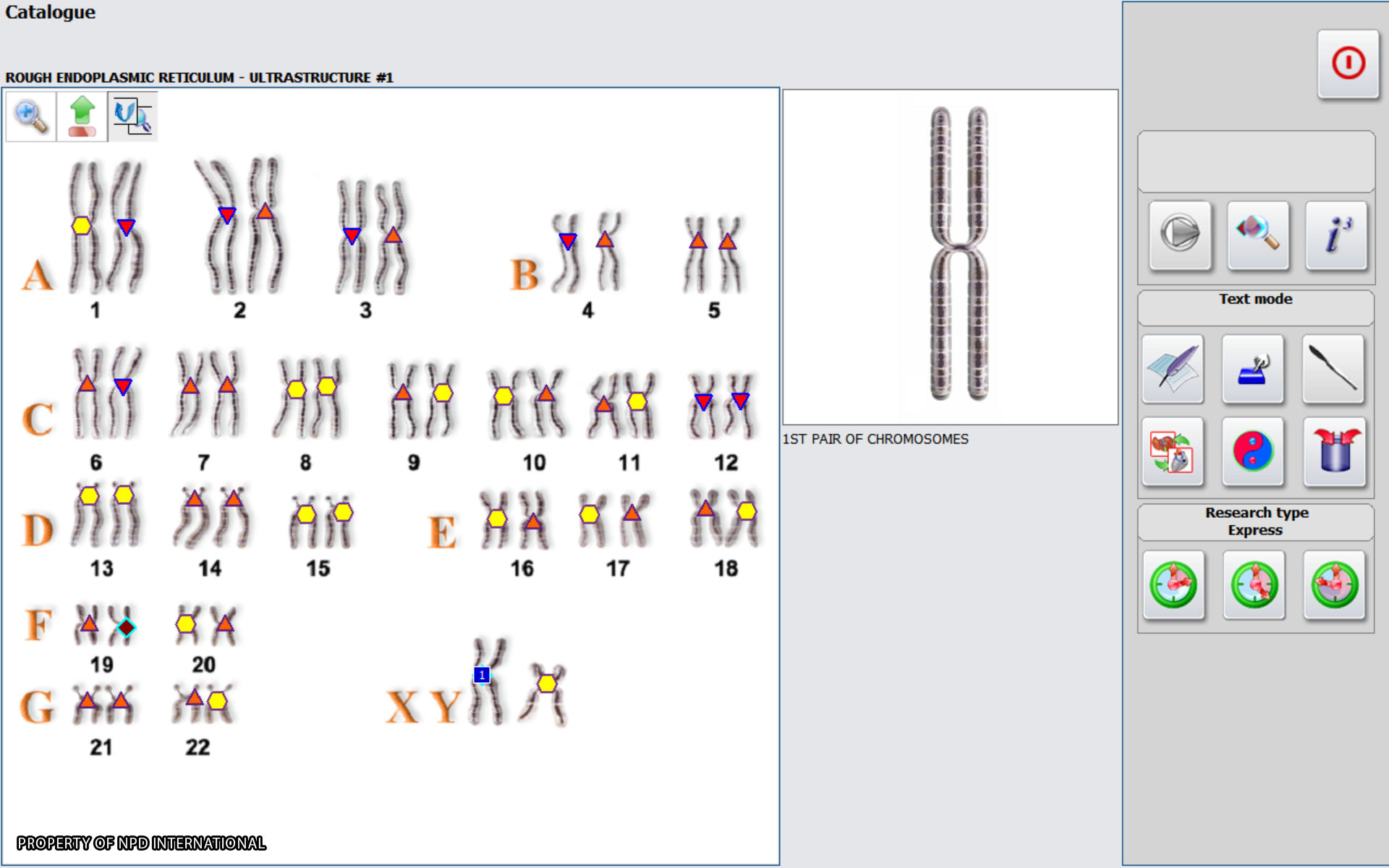
Chromosome Functional Assessment
Next, the Hunter software guided the biofeedback session to the Cytological level and the chromosomes in the nucleus of an epithelial cell were researched.
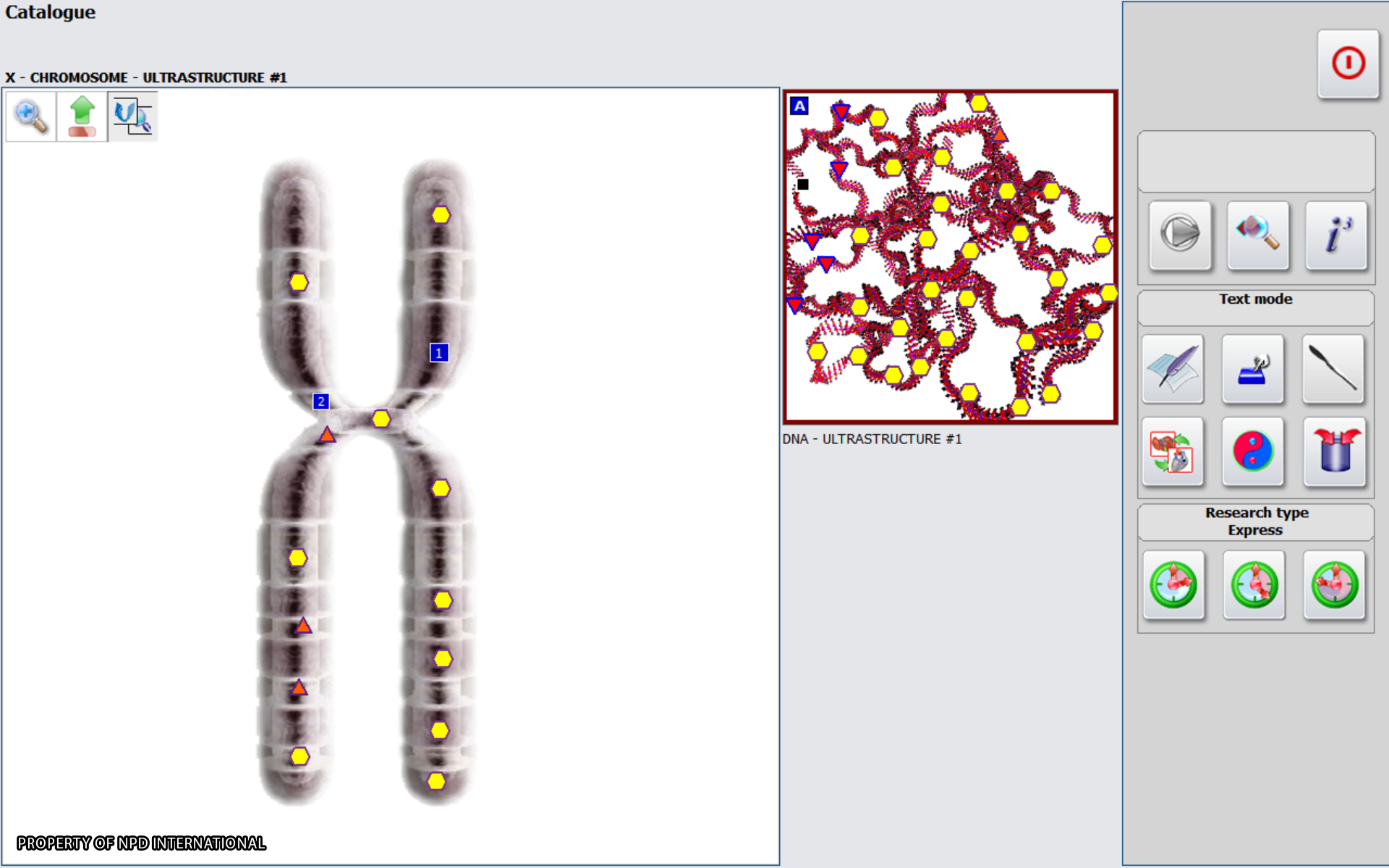
Individual Chromosome Functional Assessment
Continuing the automated research process, the X chromosome in this subjects pair of sex chromosomes was then researched.

Genetic Model Selection
The automated process finished at the genetic level, with the Hunter software identifying a possible genetic condition known as “Nephrolithiasis Type 1.” This means that the subject’s biofeedback wave spectrum characteristics closely matched that of the wave spectrum associated with this condition. Notably, this subject had been diagnosed previously with Proteinuria, Hematoria and Dysuria.
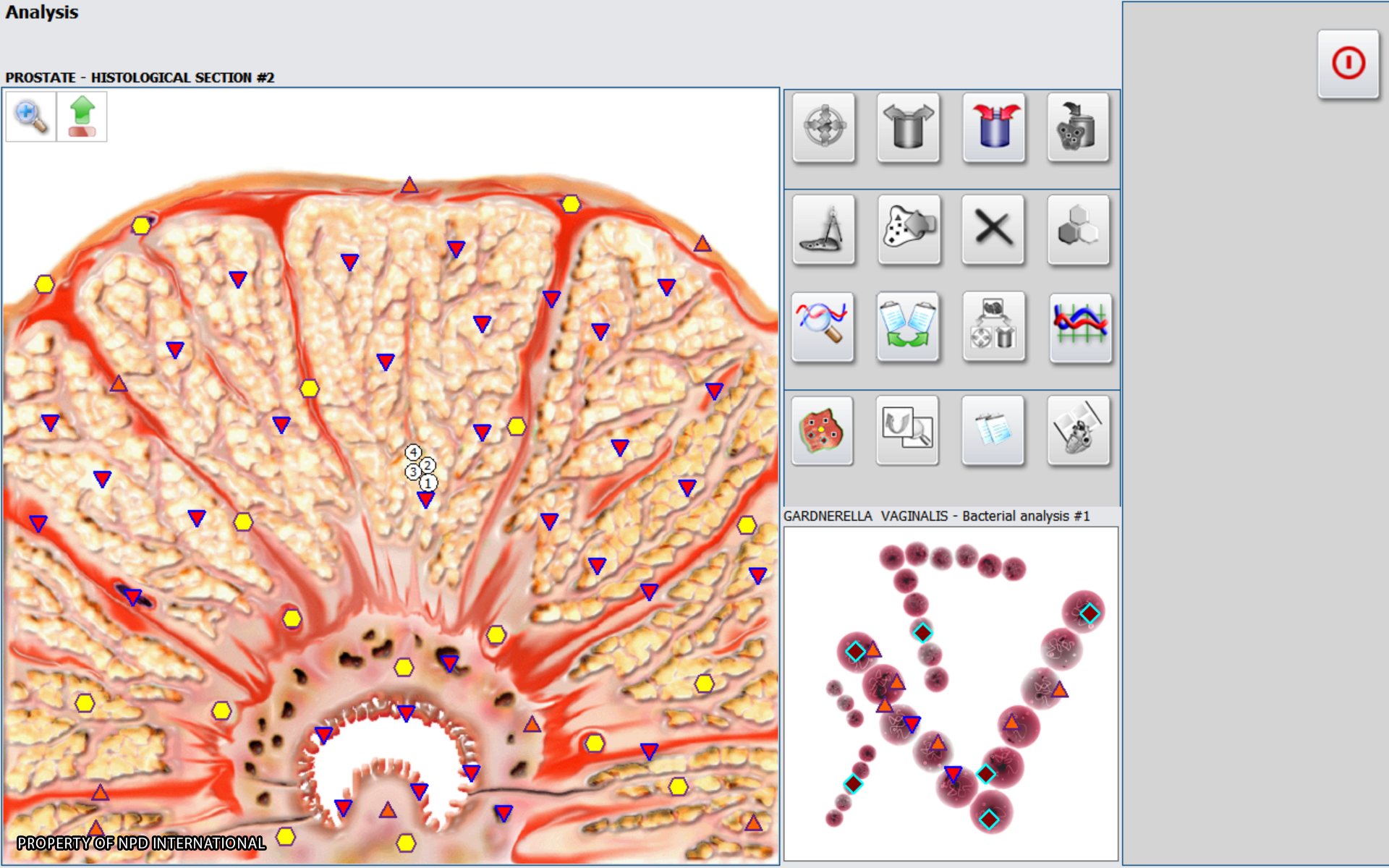
Case Study1: Prostate Biofilm?
This 41 year old male has had chronic prostatitis for 10 years. Although he currently tests negative for infection on standard medical tests, our analysis shows multiple pathogens could be playing a role in his ongoing symptoms.

Case Study1: Prostatitis – Microbial Analysis
Using the Pathomorphology and Microorganisms/ Helminths spectral entropic analysis programs, we see that his Prostatitis could be related to a biofilm of organisms, which include Gardnerella Vaginalis,Bacterium Lactis Aerogenes, Chlamydia, and Bacillus Cereus. Subsequent scans also showed Mycoplasma Hominis may be involved.
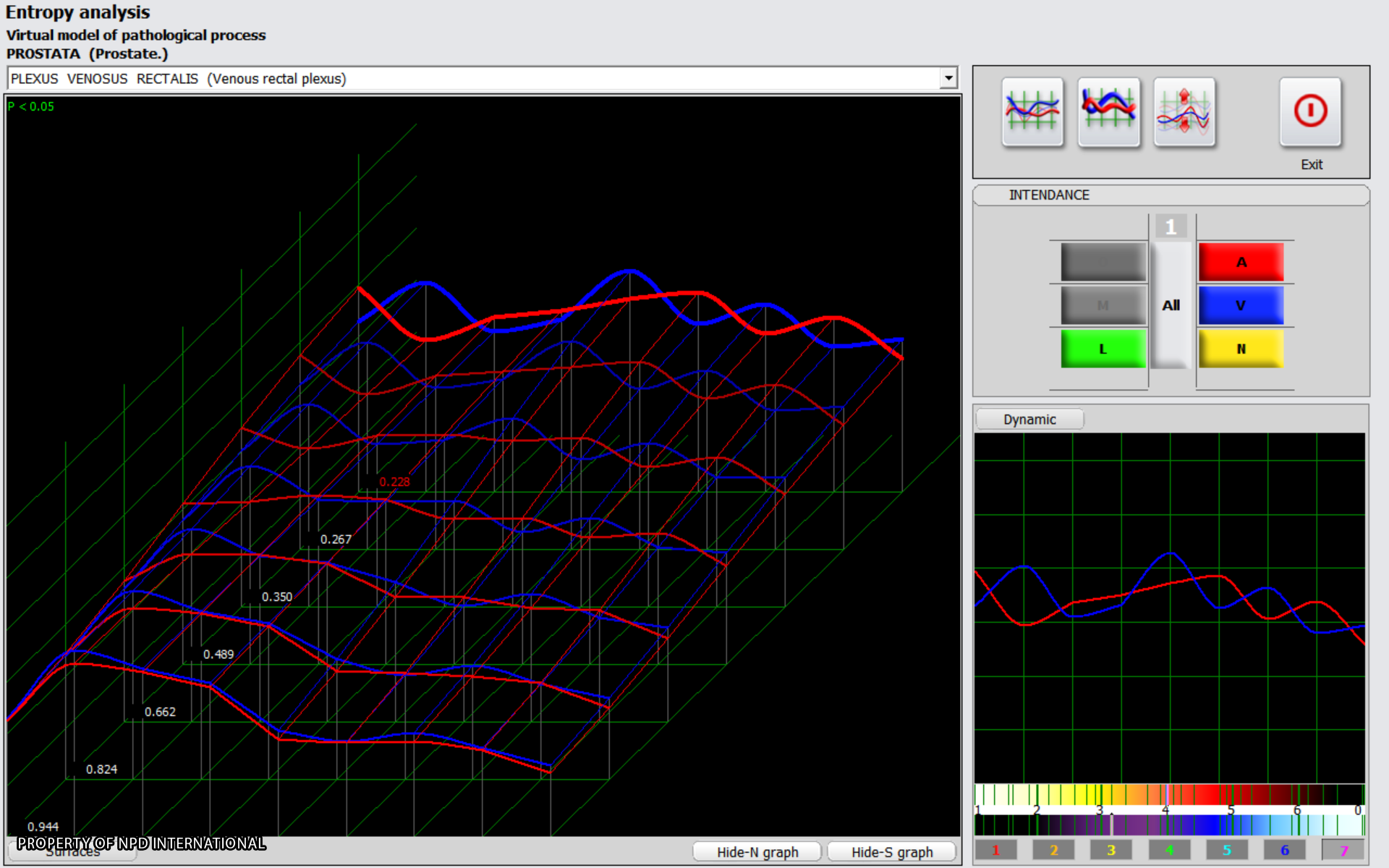
Case Study1: Prostatitis Stage 7 (Fully Developed)
Using the software’s Entropy Analysis function (which measures the development of a pathological process on a 7-stage scale), we see this subject’s wave spectrum is similar to stage-7 prostatitis. Stage-7 on this scale means the wave spectrum of a fully developed condition. This would be expected in this case, since the patient has suffered from prostatitis for many years.
- ISO 13485 certified Bioinducters with trigger sensor
- ISO 13485 certified Metatron 4025 hardware system
- Power supply unit for device, network adapter for laptop, USB-cable
- Technical documentation (73 page user’s manual and technical passport)
- Metapathia GR Hunter software downloaded via online link to your own computer
- Magnetic Resonance Cup for making homeopathics
- Training is negotiated with either the owner of the used Metatron Hunter unit or NPD
System requirements
Minimum System Requirements for Metatron “GR Hunter” and “Nutrisoft Emerald”:
- Operating system: Windows XP/ Vista / Windows 7 (32 bit)
- Processor: at least 1, 5 GHz
- RAM: 1 GB
- HDD: 60 GB
- CD-ROM
- At least 3 USB slots
- At least 3 USB slots
PC Laptop Recommendations
For maximum “Metatron” hardware-software system stability it is recommended to use the following notebook brands:
- Sony
- Samsung
- Asus
Normal Metatron System operation is possible while using other laptop brands but an operator may encounter hardware failures during operation. According to the global Metatron statistics of user submissions to technical support, approximately 80% of complaints occurred because of notebook-hardware conflict. The recommended brands for reliable use of “Metatron” hardware-software system were never cited during the history of user complaints. Due to the vast selection of PC desktops there is not enough data to provide system suggestions..

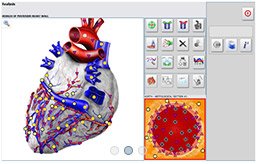 2006 and was the first software program released for the new class of Metatron 4025 systems, which feature the 4.9Ghz TGIII class of frequency generators. These developments combined to increase the average accuracy of a functional health assessment to 79.9%* and research speed was increased an astounding 5 times. Also, Biofeedback Therapy (referred to as “Meta-Therapy”) effectiveness was dramatically improved as a patient’s stress reduction and sense of greater well-being was obvious. As a result of these advvancements, word of mouth quickly spread awareness about a new emerging biofeedback technology from Russia which spurred the ongoing global sales boom.
2006 and was the first software program released for the new class of Metatron 4025 systems, which feature the 4.9Ghz TGIII class of frequency generators. These developments combined to increase the average accuracy of a functional health assessment to 79.9%* and research speed was increased an astounding 5 times. Also, Biofeedback Therapy (referred to as “Meta-Therapy”) effectiveness was dramatically improved as a patient’s stress reduction and sense of greater well-being was obvious. As a result of these advvancements, word of mouth quickly spread awareness about a new emerging biofeedback technology from Russia which spurred the ongoing global sales boom.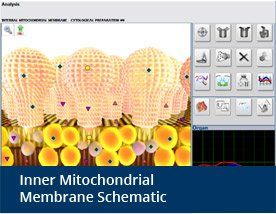 Hunter has been continuously updated since inception and is considered by us to be the most stable Metatron software available. It is very rare that NPD’s current Hunter users experience a minor software error. We estimate 1 pop-up error per 1000 biofeedback sessions.
Hunter has been continuously updated since inception and is considered by us to be the most stable Metatron software available. It is very rare that NPD’s current Hunter users experience a minor software error. We estimate 1 pop-up error per 1000 biofeedback sessions.